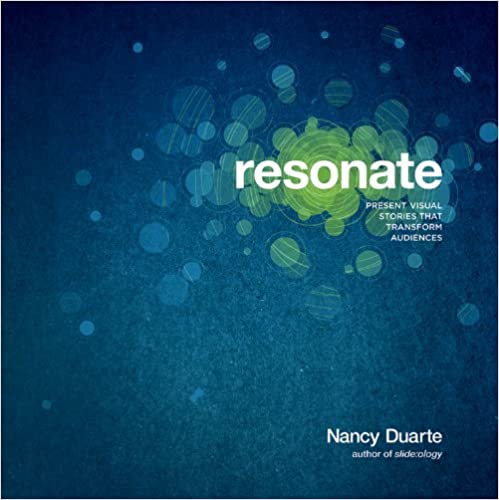“Resonate” is a book about creating impactful and persuasive presentations that connect with an audience on an emotional level. The book provides a framework for developing a presentation that tells a compelling story and engages the audience through the use of effective visuals, language, and delivery.
Start with the Audience
The key takeaway from this section is that in order to create a presentation that resonates with your audience, you need to understand who they are and what they care about. By starting with the audience, you can create a message that speaks to their needs and interests and makes them feel like you understand them.
Create an Emotional Journey
Creating an emotional journey means taking your audience on a journey that engages their emotions and connects with them on a deeper level. This can be achieved through storytelling, using powerful visuals, and creating a structure that builds to a climax and resolves in a satisfying way.
Use Powerful Visuals
Visuals are a powerful tool for engaging your audience and communicating complex ideas in a way that is easy to understand. By using powerful visuals such as images, graphs, and charts, you can create a more engaging and memorable presentation that resonates with your audience.
Rehearse, Rehearse, Rehearse
Rehearsing is the key to delivering a polished and effective presentation. By rehearsing your presentation multiple times, you can refine your message, perfect your delivery, and build confidence in your ability to deliver a compelling and persuasive talk.
Create Meaningful Content
In order to create a presentation that resonates with your audience, you need to create content that is both relevant and meaningful to them. This means doing your research and understanding the issues and challenges that your audience faces, and tailoring your message to address those concerns in a way that is clear, concise, and compelling.
Create a Sparkline
The sparkline is a visual representation of the narrative arc of your presentation. By mapping out the highs and lows of your story, you can create a compelling structure that engages your audience and keeps them interested throughout your talk.
Use Metaphor
Metaphors are powerful tools for communicating complex ideas in a way that is easy to understand. By using metaphors and analogies, you can simplify complex concepts and make them more accessible to your audience.
Use Persuasive Techniques
Persuasion is the art of convincing someone to take a particular course of action or adopt a certain point of view. In order to be persuasive, you need to understand the needs and motivations of your audience, and use persuasive techniques such as social proof, authority, and scarcity to persuade them to take action.
Use Contrast
Contrast is a powerful tool for creating emphasis and drawing attention to key points in your presentation. By using contrasting colors, fonts, and images, you can create a visual hierarchy that guides the audience’s eye and helps them focus on the most important information.
Create Empathy
Empathy is the ability to understand and share the feelings of another person. By creating empathy with your audience, you can establish a connection that makes them more receptive to your message. This can be achieved through storytelling, personal anecdotes, and other techniques that help the audience relate to you on a human level.


Member discussion: